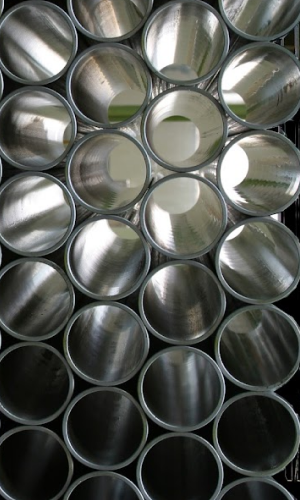This group includes unalloyed carbon steels, low-alloy molybdenum, chromium-molybdenum and chrome-molybdenum-vanadium steels as well as high-alloy chromium steels with the addition of other carbide-forming elements.

Calculate the weight of pipes
Application
These steels are mainly used in the power industry – in steam boilers, power pipelines, steam and gas turbines, boiler and turbine fittings, in pressure vessels, in various power engineering, chemical and petrochemical industry devices and in many other devices designed to work at elevated temperatures.
Steels intended for operation at elevated temperatures are characterized by:
HEAT RESISTANCE, i.e. sufficient resistance to oxidation, so that the build-up of the oxide layer inside the steel pipes does not cause an excessive increase in the temperature of their walls, which could lead to damage.
Iron, as well as low-carbon steel, has a low resistance to oxidation at elevated temperatures. Chromium increases the resistance of steel to oxidation by creating a protective layer of oxides on the surface.
CREEP RESISTANCE, i.e. such mechanical properties that ensure long-term operation at high temperature (cyclicity of loads).
The required creep resistance of steel is obtained by introducing appropriate alloying additives, which, by creating various types of carbides and carbide-nitrides, increase strength properties at elevated temperatures.